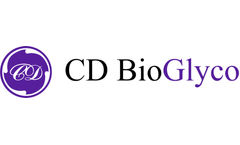Heparins Articles & Analysis: Older
13 articles found
Hydrogels can be formed from synthetic (e.g., poly(ethylene glycol), poly(hydroxyethyl methacrylate)) and naturally occurring polymers (e.g., collagen, hyaluronic acid, heparin). Due to their high water content, hydrogels are able to form in the presence of cells, proteins and DNA. ...
Studies have shown that HSV-1 gB is an essential gene for virus adsorption, penetration and cell-to-cell spread, but the function of gB gene in FHV-1 replication is not very clear. gD has hemagglutination properties and can produce hemagglutination and hemagglutination inhibition reactions. Heparin was unable to inhibit its haemagglutination properties on feline erythrocytes, ...
When measuring plasma LPL activity, heparin must be injected intravenously because of the high affinity of LPL for heparin. Intravenous injection of heparin, which releases LPL from the surface of endothelial cells into the blood, is a necessary operation for the determination of LPL activity in blood. ...
Heparin, also known as standard heparin or unfractionated heparin, is a linear polysaccharide consisting of 1-4 linked disaccharide repeat units of uronic acid and glucosamine residues. ...
In Toronto, the team of CH Best found that heparin could be isolated from the lung as well as the liver. In Stockholm, a purified heparin was developed. ...
What do rat poison and anticoagulation medicine have in common? As often happens in scientific discovery, research follows a twisted route to the most effective remedy. ...
Several sulfated structures of heparin, a glycosaminoglycan found in the liver, skin and lung, can be found in different types of organisms from the most primitive to humans. ...
There are six essential glycosaminoglycans in the body: chondroitin sulfate, dermatan sulfate, keratan sulfate, hyaluronic acid, heparin, and heparan sulfate. These glycosaminoglycans are composed of repeating disaccharide units. ...
After 7 days of low-molecular-weight heparin, no further anticoagulant was administered. Serial blood testing, echocardiography, acoustic measurements, fluoroscopy and autopsy were done. ...
This has been happening even though these patients, in accordance with standard intensive care practice, are placed on anticoagulants like heparin to prevent clots as soon as they are admitted to the ICU. BASHIR Endovascular Catheters have been used effectively to safely treat C0V1D-19 patients with VTE disorders with very good clinical outcomes. ...
Today, HIT remains a critical clinical context in many hospital settings, when heparin, mainly unfractionated, is used in cardiology, intensive care units, or ECC, including CPB and increasingly ECMO. ...
Immunoassays for heparin dependent antibodies have been introduced since the discovery of PF4 as the major target antigen in presence of heparin. Different immunoassay presentations are available, and interestingly heparin can be replaced by polyanions complexes and its native structure is then altered as shown on figure 3. This ...
Many of the heparin dependent antibodies, including those with the IgG isotype, are asymptomatic, and only a subgroup of antibodies is positive in platelet activation assays. ...










